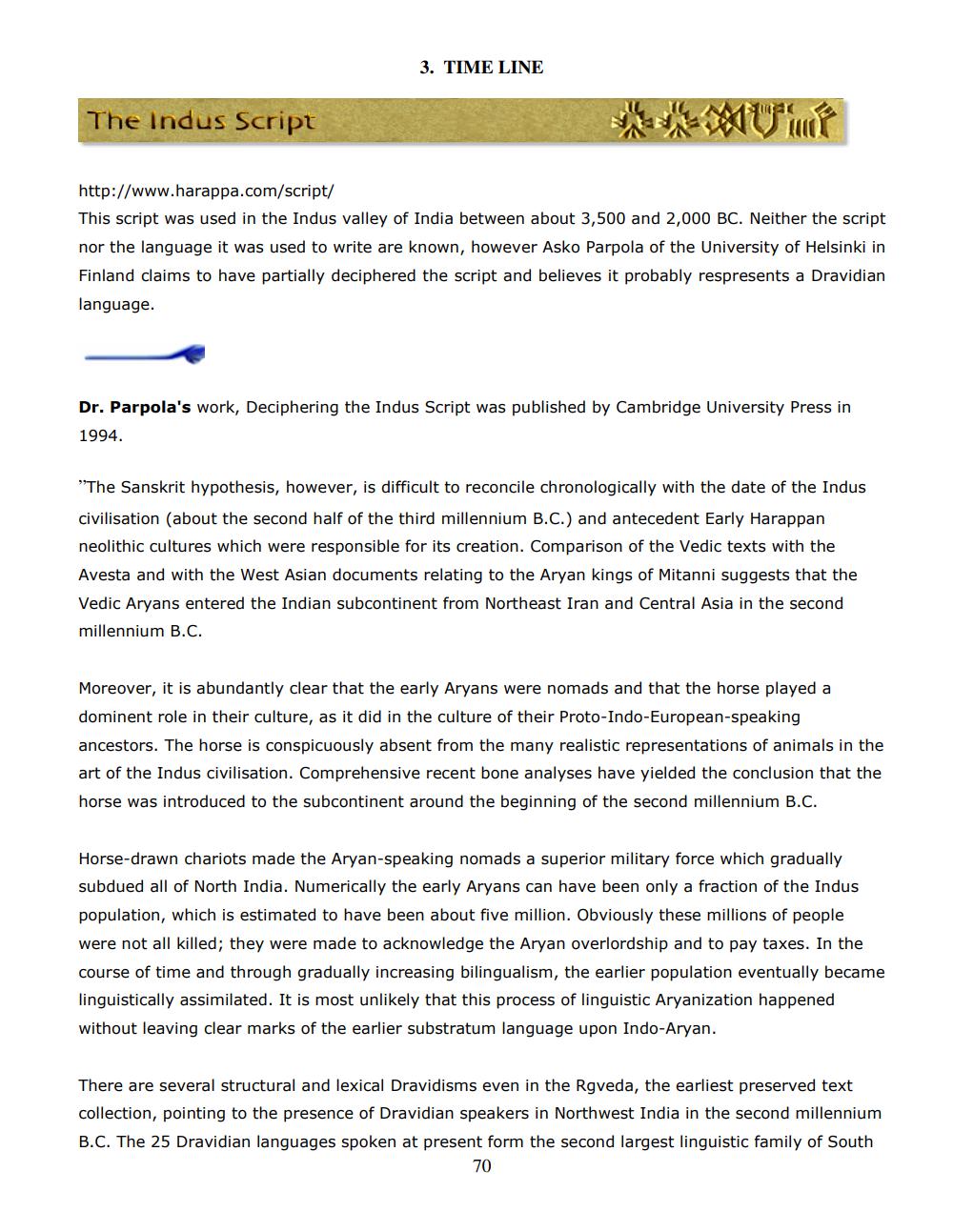________________
3. TIME LINE
The Indus Script
MUL
http://www.harappa.com/script/ This script was used in the Indus valley of India between about 3,500 and 2,000 BC. Neither the script nor the language it was used to write are known, however Asko Parpola of the University of Helsinki in Finland claims to have partially deciphered the script and believes it probably respresents a Dravidian language.
Dr. Parpola's work, Deciphering the Indus Script was published by Cambridge University Press in 1994.
"The Sanskrit hypothesis, however, is difficult to reconcile chronologically with the date of the Indus civilisation (about the second half of the third millennium B.C.) and antecedent Early Harappan neolithic cultures which were responsible for its creation. Comparison of the Vedic texts with the Avesta and with the West Asian documents relating to the Aryan kings of Mitanni suggests that the Vedic Aryans entered the Indian subcontinent from Northeast Iran and Central Asia in the second millennium B.C.
Moreover, it is abundantly clear that the early Aryans were nomads and that the horse played a dominent role in their culture, as it did in the culture of their Proto-Indo-European-speaking ancestors. The horse is conspicuously absent from the many realistic representations of animals in the art of the Indus civilisation. Comprehensive recent bone analyses have yielded the conclusion that the horse was introduced to the subcontinent around the beginning of the second millennium B.C.
Horse-drawn chariots made the Aryan-speaking nomads a superior military force which gradually subdued all of North India. Numerically the early Aryans can have been only a fraction of the Indus population, which is estimated to have been about five million. Obviously these millions of people were not all killed; they were made to acknowledge the Aryan overlordship and to pay taxes. In the course of time and through gradually increasing bilingualism, the earlier population eventually became linguistically assimilated. It is most unlikely that this process of linguistic Aryanization happened without leaving clear marks of the earlier substratum language upon Indo-Aryan.
There are several structural and lexical Dravidisms even in the Rgveda, the earliest preserved text collection, pointing to the presence of Dravidian speakers in Northwest India in the second millennium B.C. The 25 Dravidian languages spoken at present form the second largest linguistic family of South
70




